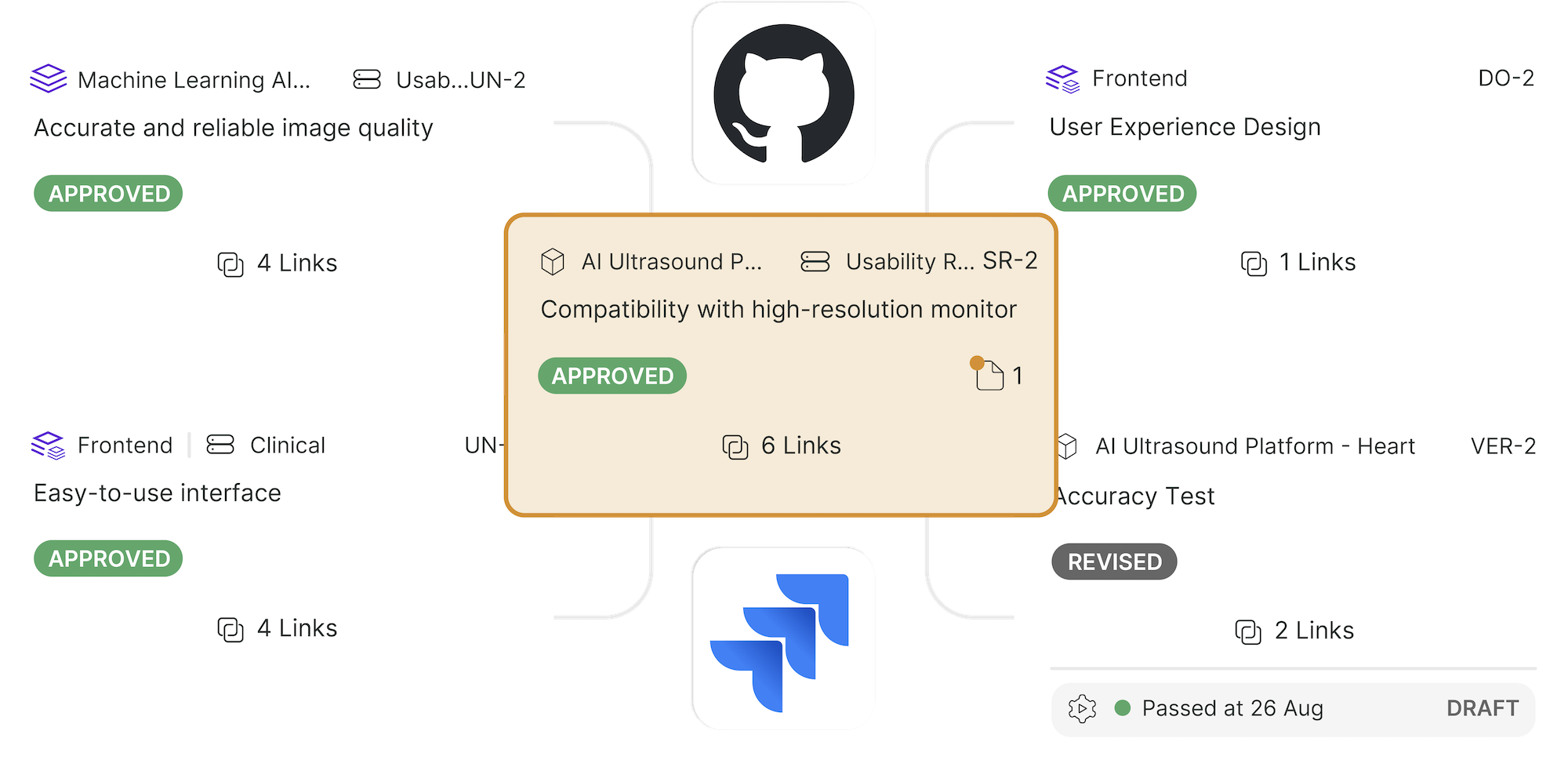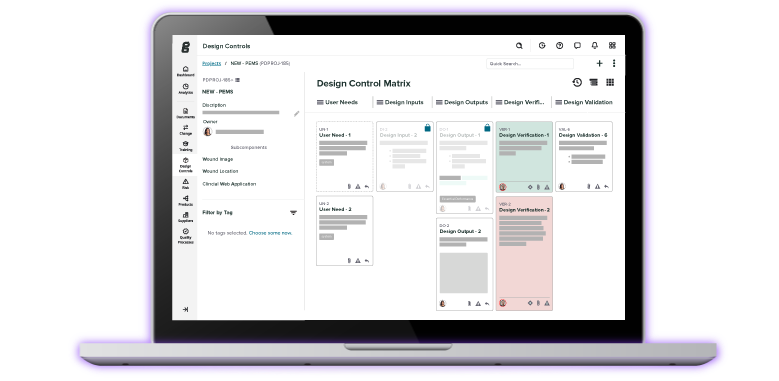QMSR Explained: What FDA QSR & ISO 13485 Harmonization Means for Medical Device Companies

On January 31, 2024, FDA released its Final Rule for the new Quality Management System Regulation (QMSR).
The new QMSR is the result of aligning the current good manufacturing practice (cGMP) requirements of the FDA’s Quality System Regulation (QSR) with the international consensus standard for medical device quality management systems, ISO 13485:2016.
Cue the applause, because the medical device industry has been buzzing about harmonization between FDA’s QSR and ISO 13485 since 2018, and now it’s finally happening!
Well, almost. The effective date of enforcement for the QMSR is Feb. 2, 2026, which is when MedTech companies will need to comply with the new regulation.
Still, this is a major step toward harmonization, and one that medical device professionals have been waiting for for a long time.
So, let’s cut to the chase: why is FDA harmonizing the standards, what do the new changes look like, and how will this change impact medical device companies? This article will address each of these questions, explaining everything you need to know about QMSR moving forward.
QMSR vs. QSR: How are they different?
FDA is incorporating ISO 13485 into the current QSR “by reference,” meaning the new QMSR will address certain requirements by referencing their location in ISO 13485:2016. This will, of course, result in substantial changes to 21 CFR Part 820 as we know it.
The good news is, many of these changes are semantic in nature and don’t change the basic QMS requirements for medical device companies. For instance, you’ll notice that the terms device master record (DMR), design history file (DHF), and device history record (DHR) don’t appear in the final rule.
That doesn’t mean, however, that the documentation requirements of the DMR, DHR, and DHF have been eliminated. FDA simply believes those requirements are adequately described in ISO 13485 and will be covered by the catch-all term Medical Device File (MDF).
On the other hand, there are terms and definitions in ISO 13485 that “could create inconsistencies with FDA’s statutory and regulatory framework.”
In these cases, the FDA’s definitions will supersede those of ISO 13485. For example, ‘device’ and ‘labeling’ will supersede the definitions for ‘medical device’ and ‘labelling’ in ISO 13485.
The Final Rule also includes several new sections in Part 820:
-
Section 820.7 - Incorporation by reference
-
Section 820.10 - Requirements for a quality management system
-
Section 820.35 - Control of records
-
Section 820.45 - Device labeling and packaging controls
For context, here’s a screenshot of the table of contents from the QMSR Final Rule.
.png)
That last section, 820.45, could use a little more attention. FDA has previously pointed out that there are device recalls every year related to product labeling and packaging.
Clause 7.5.1(e) of ISO 13485 states that “defined operations for labeling and packaging shall be implemented”, but FDA doesn’t seem to think this goes far enough. That’s why the agency is introducing a new labeling and packaging clause to the proposed Part 820.
Section 820.45 will require “procedures that provide a detailed description of labeling and packaging activities to ensure the integrity, inspection, storage, and operations for labeling and repackaging.”
The main items Section 820.45 will require are:
-
UDI or UPC
-
Expiration date
-
Storage instructions
-
Handling instructions
-
Processing instructions
Keep in mind, this is all in addition to 21 CFR Part 801 - Labeling, which lays out the specific requirements for the labeling of medical devices.
February 2026 will be here sooner than you think, so it’s worth it to start looking at your current labeling and packaging procedures now—and start getting them in line with what will be expected.
Why is FDA harmonizing QSR and ISO 13485?
While ISO 13485 has been revised repeatedly over the past two decades, the QSR remains nearly unchanged since it was released in 1996.
When it first proposed the QMSR, FDA admitted that “regulatory expectations for a QMS have evolved since the current Part 820 was implemented over 20 years ago,” and that, “By proposing to incorporate ISO 13485 by reference, we are seeking to explicitly require current internationally recognized regulatory expectations for QMS for devices subject to FDA’s jurisdiction.”
FDA also notes that it has paid attention to the revisions to ISO 13485 over the years, and the agency feels the 2016 version of the standard is closely aligned with requirements of 21 CFR Part 820. All ISO standards are reviewed every five years to decide whether they need updating, and the current version of ISO 13485 was last confirmed in 2020.
FDA repeatedly mentions in its Final Rule that the QMS requirements in Part 820 and ISO 13485 are substantially similar and the burden of complying with the new QMSR should not be any greater than that of current compliance with the QSR.
In fact, the agency believes that harmonization will further the cause of “regulatory simplicity and global harmonization and should reduce burdens on a regulated industry, thereby providing patients more efficient access to necessary devices.”
What does the FDA QSR transition to ISO 13485 mean for medical device manufacturers?
While this may seem like a lot of change for medical device manufacturers, it’s important to keep in mind that the requirements of ISO 13485:2016 and the QSR are really not all that different. The QMSR will not require a total overhaul of your QMS, but should hopefully make life easier for everyone involved.
With that said, there are a few things to keep in mind regarding the new QMSR:
-
The Final Rule also amends 21 CFR Part 4 — Regulation of Combination Products. FDA has made “conforming edits” to clarify QMS requirements for combination products. Note that these edits do not affect the CGMP requirements for combination products.
- FDA does intend to change its inspection process (QSIT) to ensure that it is using an inspection approach consistent with the requirements in QMSR, but isn’t ready to share how just yet. You can find more information on inspections in Comment 81 and its response.
- Getting or having ISO 13485:2016 certification does not mean you will automatically be in compliance with the new QMSR. You will not be exempt from FDA inspections if you are already ISO 13485-certified. You will not be issued an ISO 13485 certification of conformance after an FDA inspection.
It’s a good idea to get familiar with these sections of the QMSR now and consider how you’ll achieve compliance with their requirements, even if you’re currently in conformity with ISO 13485:2016.
Modernize your QMS with Greenlight Guru
While you’re thinking about the changes you need to make to comply with the QMSR, it also makes sense to take a step back and look at the QMS solution you’re using.
Is it built specifically for MedTech? Does it help you achieve truly paperless audits? Does it come with a top-notch team of medical device experts who are always ready to help?
If you answered ‘no’ to any of those questions, it’s probably time to modernize your QMS.
At Greenlight Guru, we built our eQMS solution for MedTech companies because we know that the ever-changing standards and regulations—like QMSR—are a lot to handle for even the most seasoned medical device companies. That’s why our QMS comes pre-validated per FDA and ISO best practices—so you don’t have to worry about customization for compliance.
So if you’re ready to experience the power of a purpose-built QMS, then get your free demo of Greenlight Guru today!
Etienne Nichols is the Head of Industry Insights & Education at Greenlight Guru. As a Mechanical Engineer and Medical Device Guru, he specializes in simplifying complex ideas, teaching system integration, and connecting industry leaders. While hosting the Global Medical Device Podcast, Etienne has led over 200...
Related Posts
21 CFR Part 820: Ultimate Guide to FDA's Quality System Regulation (QSR) for Medical Devices
FDA Publishes Final Rule on QMSR
What’s left of the QSR in QMSR? Your guide to the new Part 820
Get your free download
FDA QSR, QMSR & ISO 13485:2016 Internal Audit Checklist











